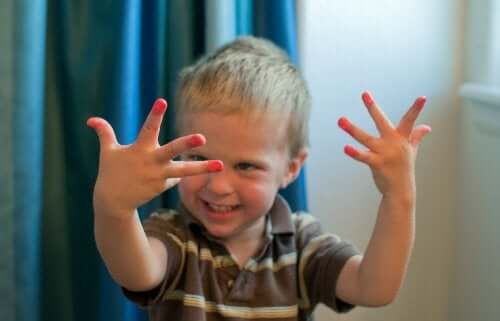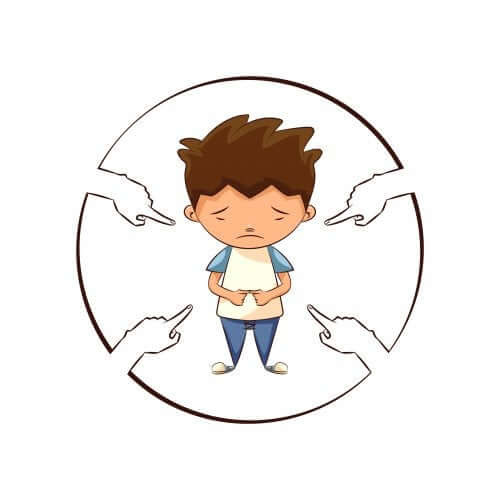Children's Books to Eliminate Prejudices

Although it may seem cliché, learning values are essential from childhood. Teaching values and making children understand them can be a complex task. For this reason, today, we’ll share a series of children’s books to eliminate prejudices to help children develop respect, politeness, and helping others.
However, parents and educators should be aware that, before using this tool, the first thing they should do is lead by example, as they should be aware that children imitate everything the adults around them do.
Below, we show you children’s books to eliminate prejudices, eradicate stereotypes, and teach children a series of necessary values.
Children’s books to eliminate prejudices
1. La peluca de Luca (In English: Luca’s Wig) by Helena Berenguer
A fantastic children’s book to eliminate prejudices based on a true story. The main character of the story, Luca, doesn’t understand why his classmates make fun of him. The reason why they bully him is that Luca loves to keep his hair long, dress up, and wear a pink wig. However, his classmates tell him that “only girls do that.”

A book that will make you reflect on the stereotypes and prejudices towards a person’s tastes due to the questions Luca asks himself. Why are there things for boys and things for girls? Why do I have to choose?
In fact, it’s also an ideal book to bring into classrooms because, as it’s part of an educational project, it has a didactic guide aimed at nursery and primary education to address gender roles and stereotypes.
2. The Girl Who Wouldn’t Brush Her Hair by Kate Bernheimer
“This is the way I am.” That’s the motto of the main character of this story, who refuses to brush her curly hair. A book that will help address different topics: self-esteem in children, the right to be who they want to be, relationships with others, and grooming in children.
The very colorful and striking illustrations, along with the well-structured story, will help make children understand where to set boundaries on the harmful comments other people make.
3. The Different Dragon by Jennifer Bryan
How do you imagine a dragon? You surely thought of a big, wild, fierce, and very scary animal. And this is what this fantastic story wants to show: how to eliminate prejudices and stereotypes. This is because the dragon of this story is different and doesn’t want to be like other dragons.
A wonderful book due to its illustrations and the message it conveys. Firstly, it aims to break stereotypes. Secondly, the visibility of an “atypical” family formed by two mothers and their son. This also helps eliminate family stereotypes.

More children’s books to eliminate prejudices
4. Colección Érase dos veces (In English: Twice Upon a Time book collection) by Belén Gaudes and Pablo Macías
Although we’ve already talked about this fantastic book collection in another post, it’s one of the best to eliminate prejudices. This is a book collection of “restructured” classic children’s stories, where the princesses fend for themselves, don’t want princes to provide for them, and fight against everything.
5. Black Eyes by Lluís Farré
A funny story that addresses the serious issue of prejudices. All the members of the Calatayud family have olive green eyes. However, their last child is born with black eyes.
This really shocks the child’s parents, which is why they decide to make him wear dark glasses so that no one sees the color of his eyes, because everyone knows that people’s eyes should be olive green.
This book makes both the main character and the readers think of the following questions: What’s wrong with having eyes of a different color? Is it wrong to be different from others? Why do we all have to follow the same pattern? This is a perfect book to reflect on breaking prejudices and eliminating stereotypes.
Although it may seem cliché, learning values are essential from childhood. Teaching values and making children understand them can be a complex task. For this reason, today, we’ll share a series of children’s books to eliminate prejudices to help children develop respect, politeness, and helping others.
However, parents and educators should be aware that, before using this tool, the first thing they should do is lead by example, as they should be aware that children imitate everything the adults around them do.
Below, we show you children’s books to eliminate prejudices, eradicate stereotypes, and teach children a series of necessary values.
Children’s books to eliminate prejudices
1. La peluca de Luca (In English: Luca’s Wig) by Helena Berenguer
A fantastic children’s book to eliminate prejudices based on a true story. The main character of the story, Luca, doesn’t understand why his classmates make fun of him. The reason why they bully him is that Luca loves to keep his hair long, dress up, and wear a pink wig. However, his classmates tell him that “only girls do that.”

A book that will make you reflect on the stereotypes and prejudices towards a person’s tastes due to the questions Luca asks himself. Why are there things for boys and things for girls? Why do I have to choose?
In fact, it’s also an ideal book to bring into classrooms because, as it’s part of an educational project, it has a didactic guide aimed at nursery and primary education to address gender roles and stereotypes.
2. The Girl Who Wouldn’t Brush Her Hair by Kate Bernheimer
“This is the way I am.” That’s the motto of the main character of this story, who refuses to brush her curly hair. A book that will help address different topics: self-esteem in children, the right to be who they want to be, relationships with others, and grooming in children.
The very colorful and striking illustrations, along with the well-structured story, will help make children understand where to set boundaries on the harmful comments other people make.
3. The Different Dragon by Jennifer Bryan
How do you imagine a dragon? You surely thought of a big, wild, fierce, and very scary animal. And this is what this fantastic story wants to show: how to eliminate prejudices and stereotypes. This is because the dragon of this story is different and doesn’t want to be like other dragons.
A wonderful book due to its illustrations and the message it conveys. Firstly, it aims to break stereotypes. Secondly, the visibility of an “atypical” family formed by two mothers and their son. This also helps eliminate family stereotypes.

More children’s books to eliminate prejudices
4. Colección Érase dos veces (In English: Twice Upon a Time book collection) by Belén Gaudes and Pablo Macías
Although we’ve already talked about this fantastic book collection in another post, it’s one of the best to eliminate prejudices. This is a book collection of “restructured” classic children’s stories, where the princesses fend for themselves, don’t want princes to provide for them, and fight against everything.
5. Black Eyes by Lluís Farré
A funny story that addresses the serious issue of prejudices. All the members of the Calatayud family have olive green eyes. However, their last child is born with black eyes.
This really shocks the child’s parents, which is why they decide to make him wear dark glasses so that no one sees the color of his eyes, because everyone knows that people’s eyes should be olive green.
This book makes both the main character and the readers think of the following questions: What’s wrong with having eyes of a different color? Is it wrong to be different from others? Why do we all have to follow the same pattern? This is a perfect book to reflect on breaking prejudices and eliminating stereotypes.
All cited sources were thoroughly reviewed by our team to ensure their quality, reliability, currency, and validity. The bibliography of this article was considered reliable and of academic or scientific accuracy.
- Berenguer, H. (2013). La peluca de Luca. Editorial la peluca de Luca.
- Bernheimer, K. (2014). La niña que no quería cepillarse el cabello. Editorial Picarona.
- Brayn, J. (2015). El dragón diferente. Two Lives Pub.
- Gaudes, B. (2013). Érase dos veces. Editorial Cuatro Tuercas.
- Farré, L. (2016). Ojos negros. Ediciones SM.
This text is provided for informational purposes only and does not replace consultation with a professional. If in doubt, consult your specialist.








